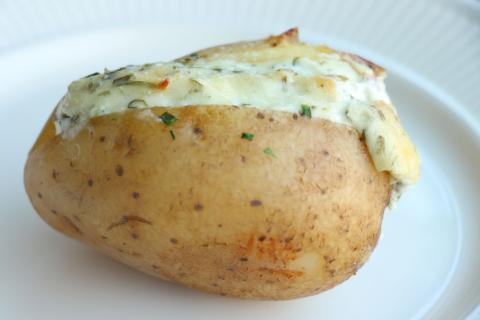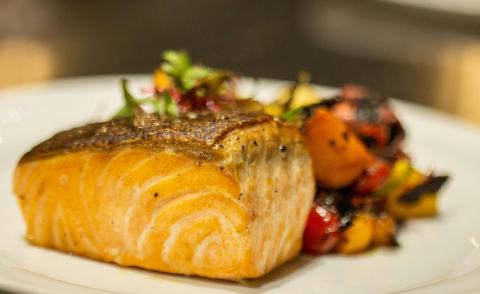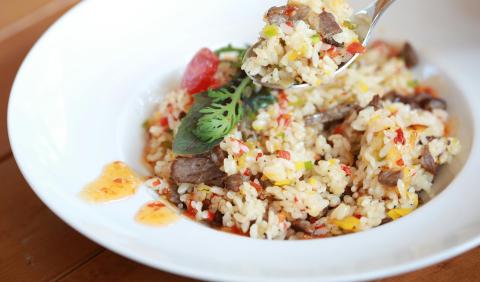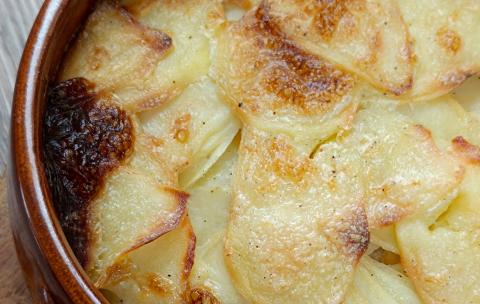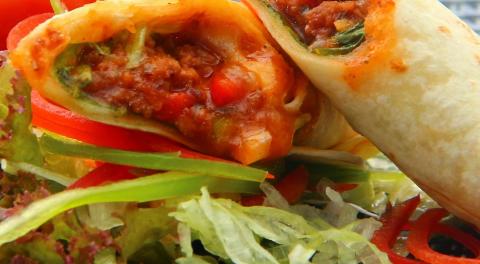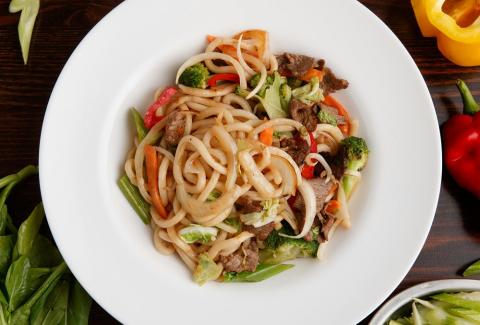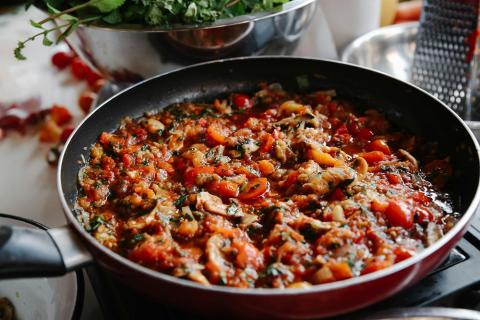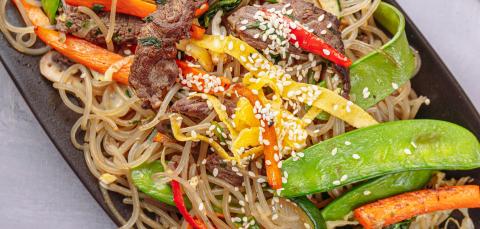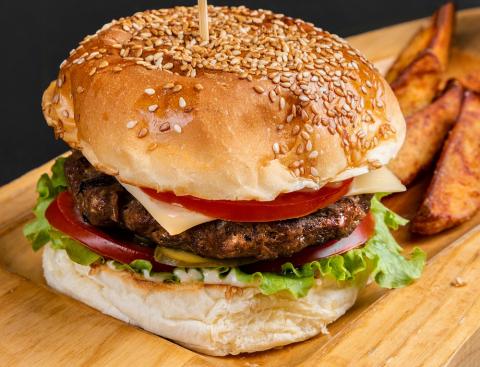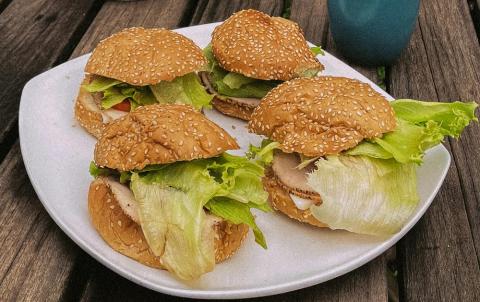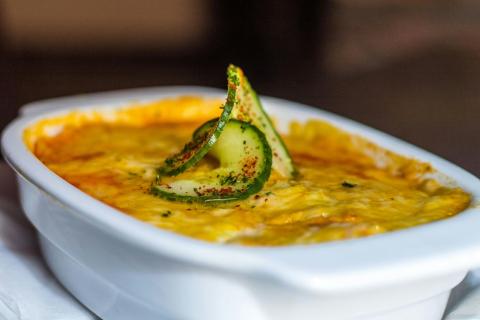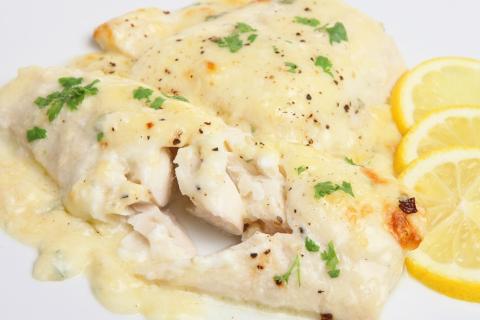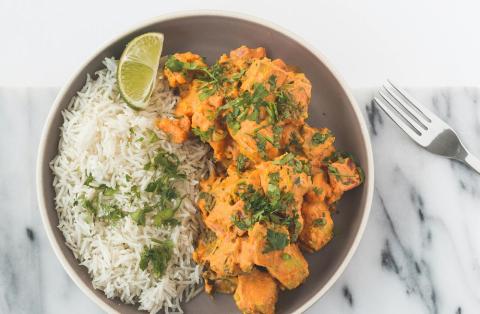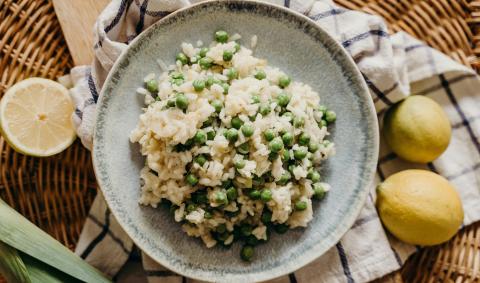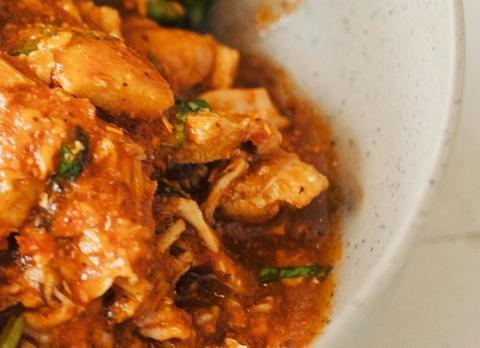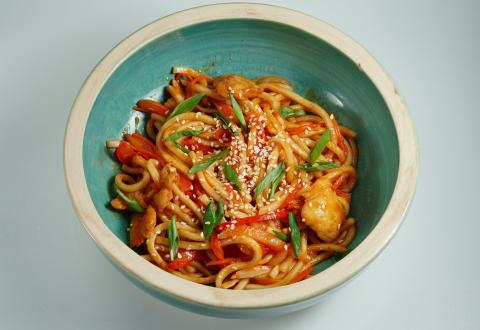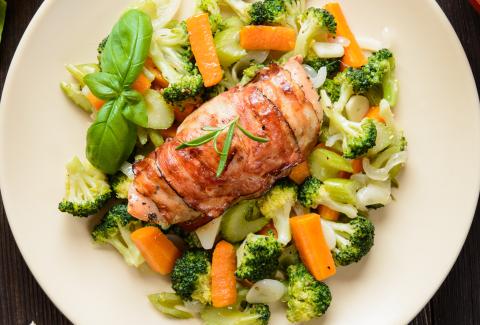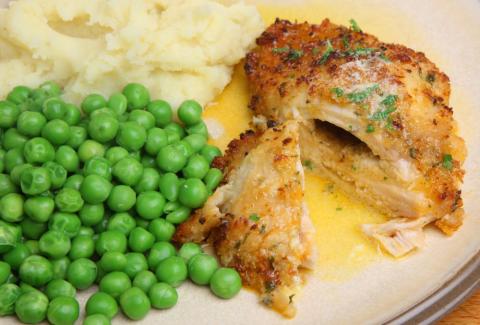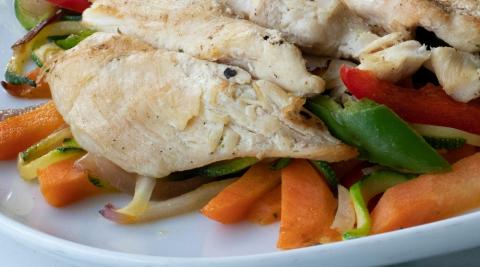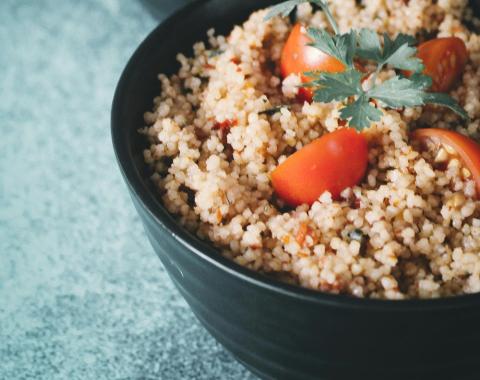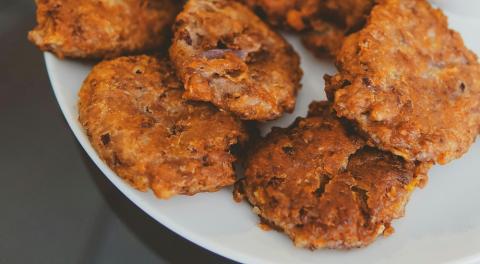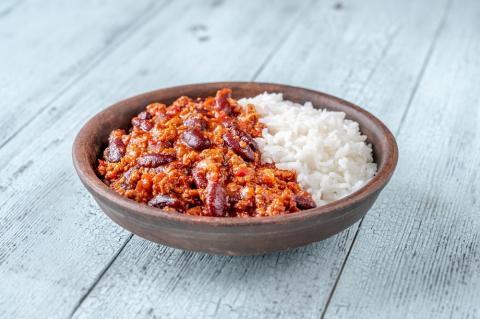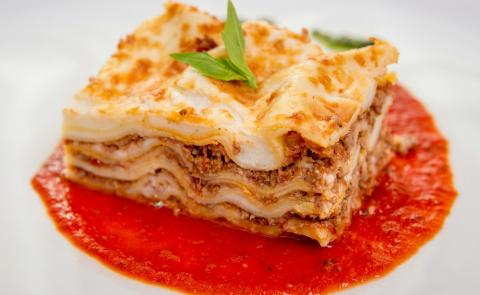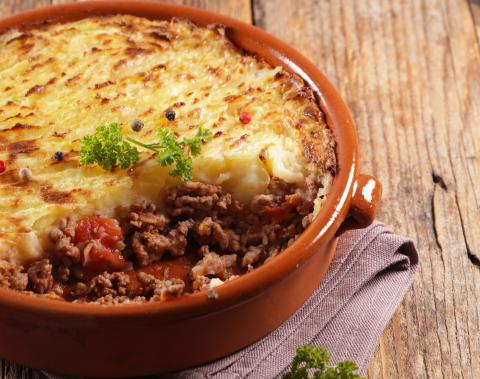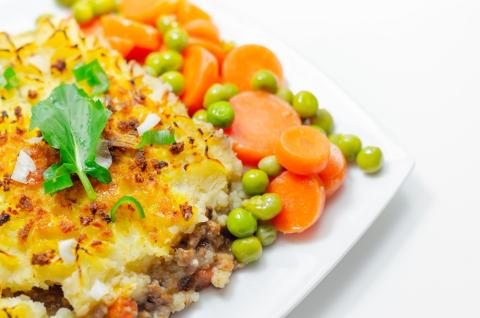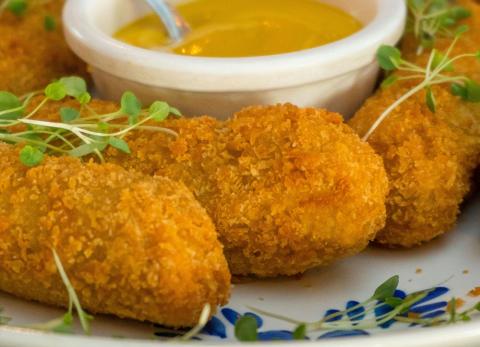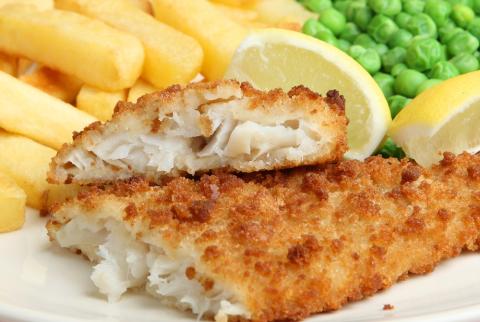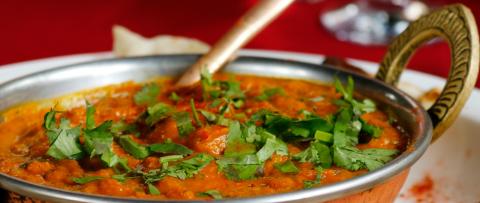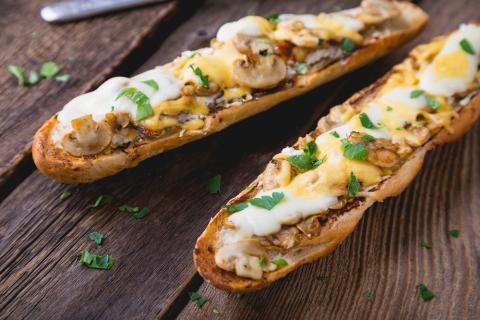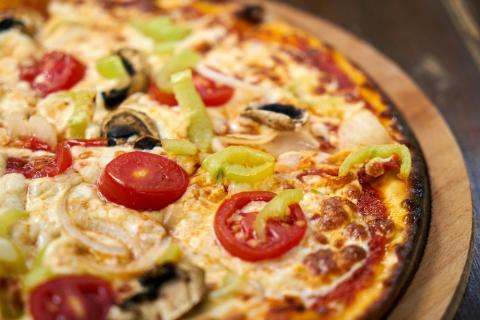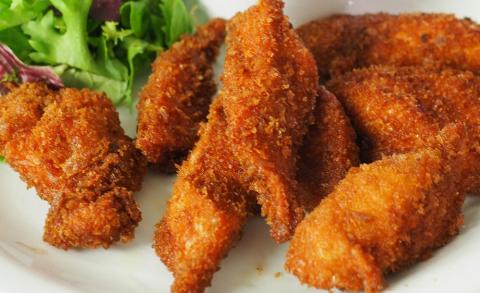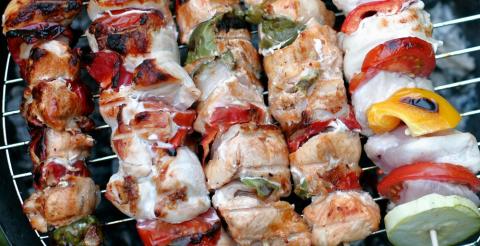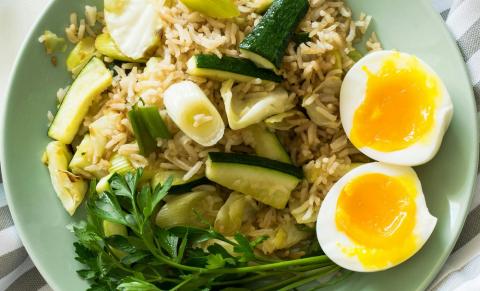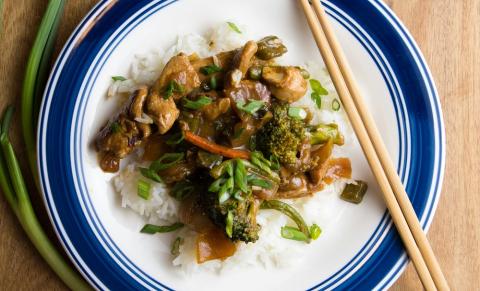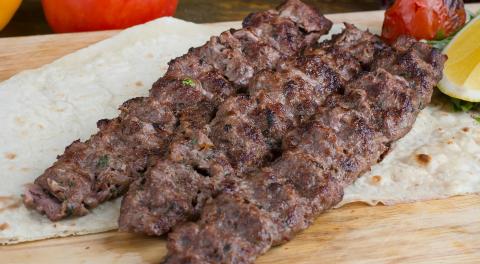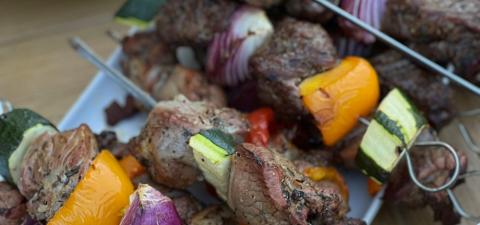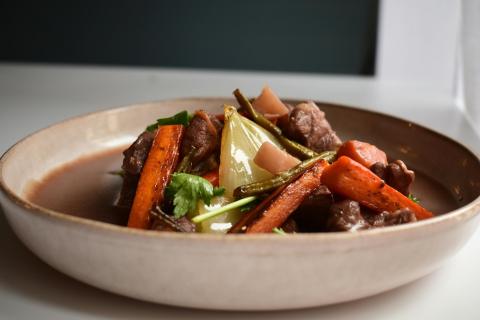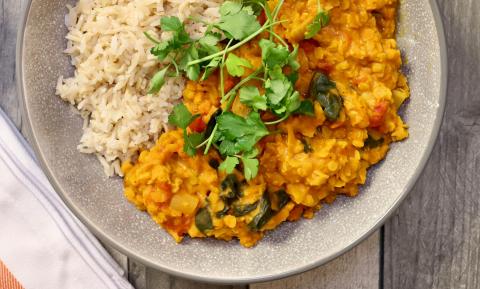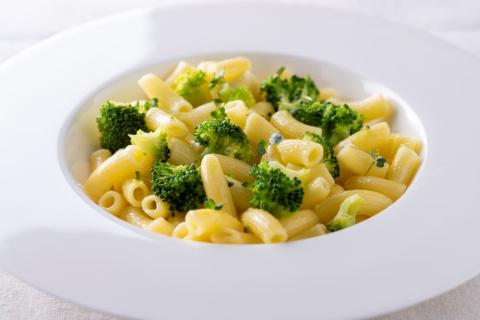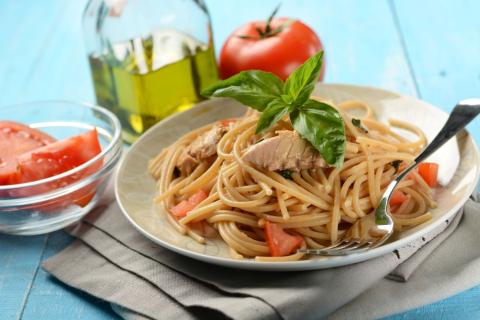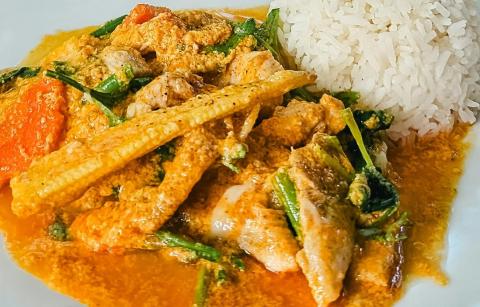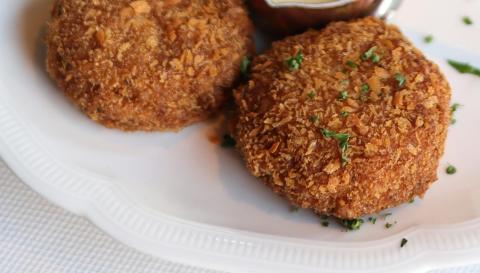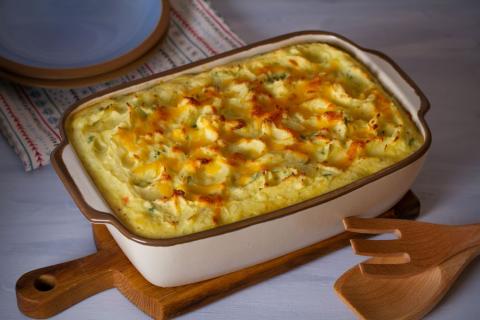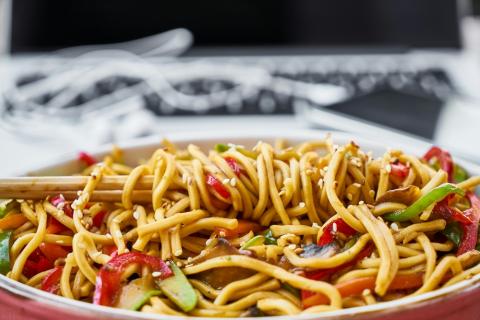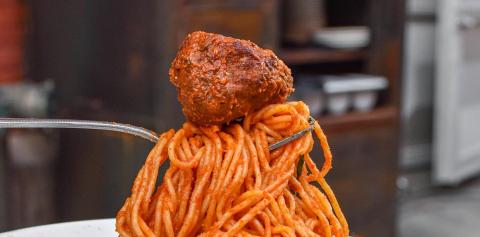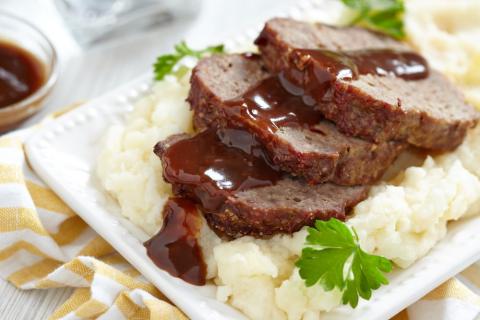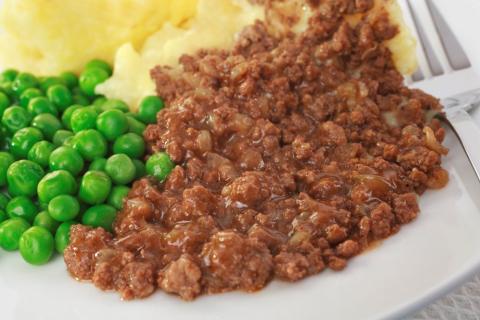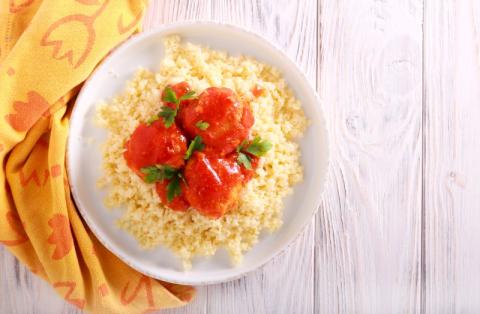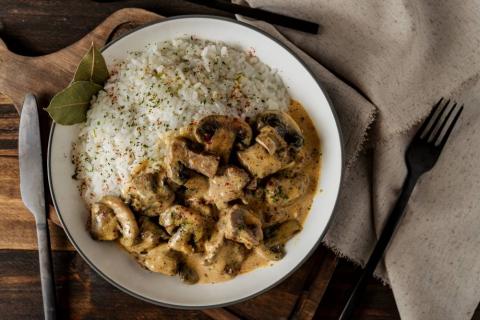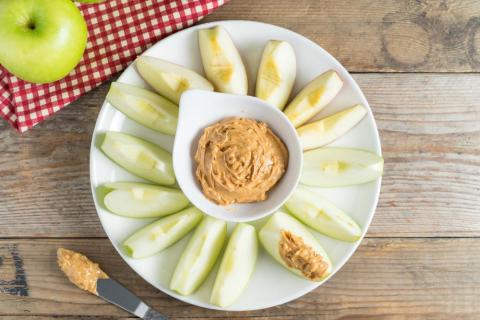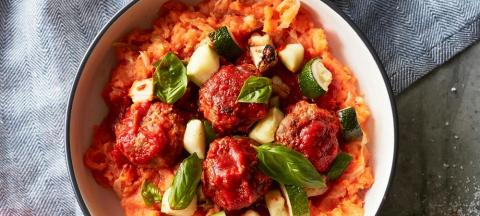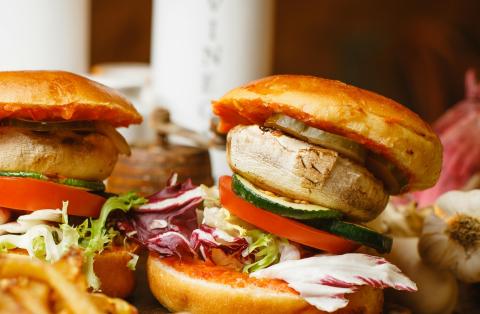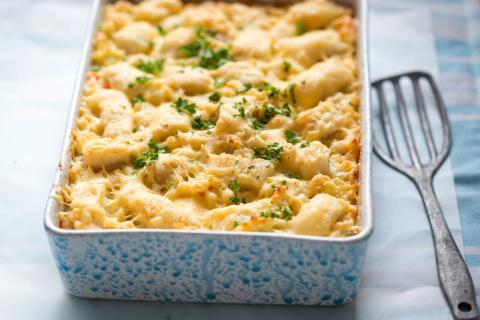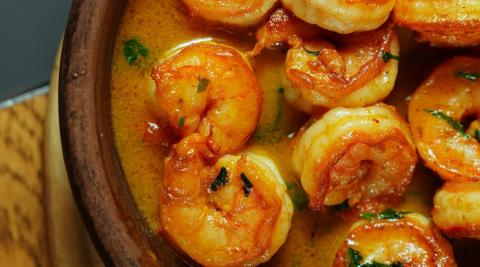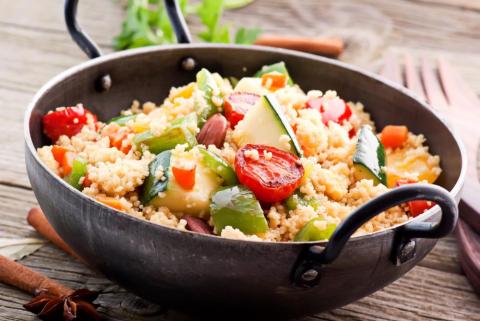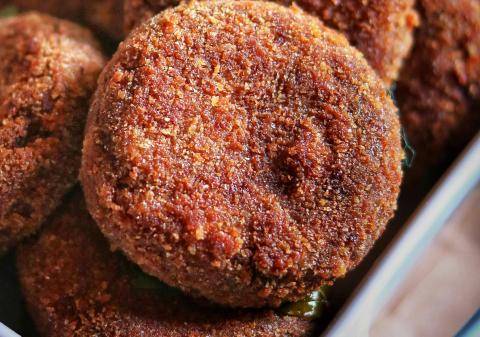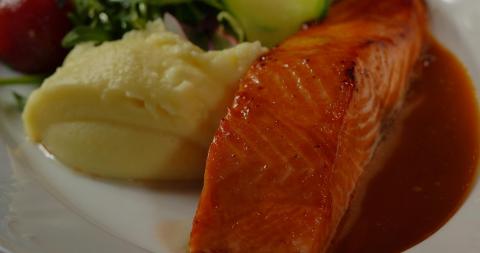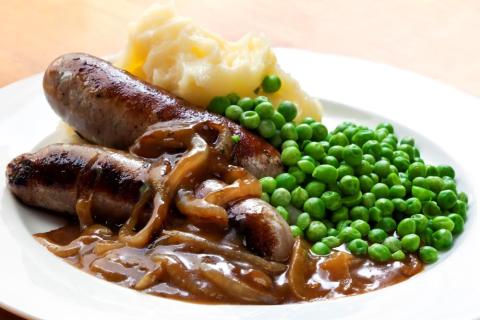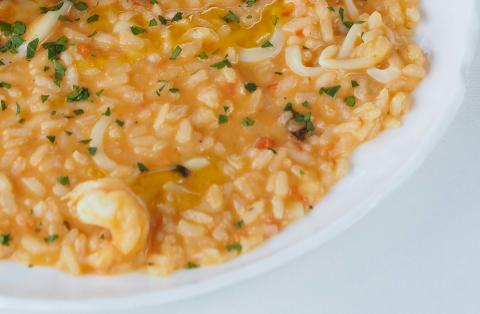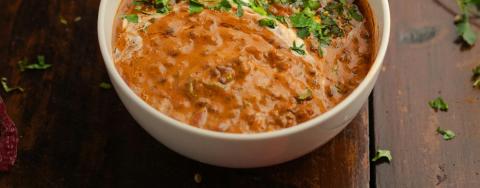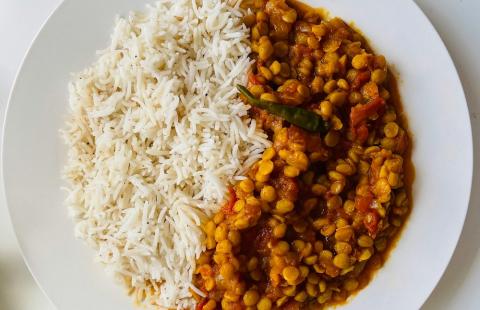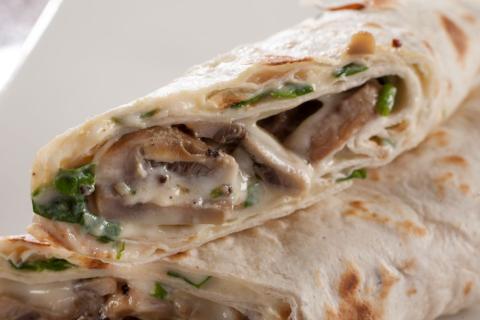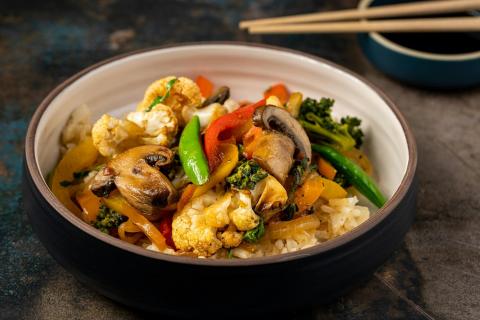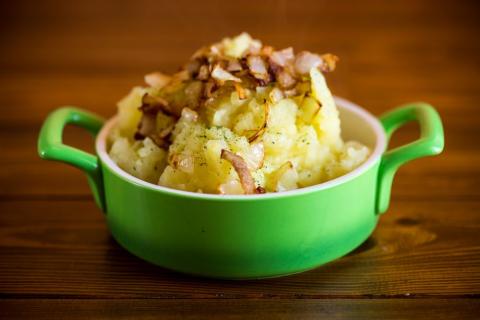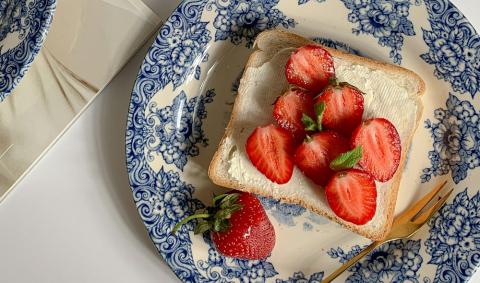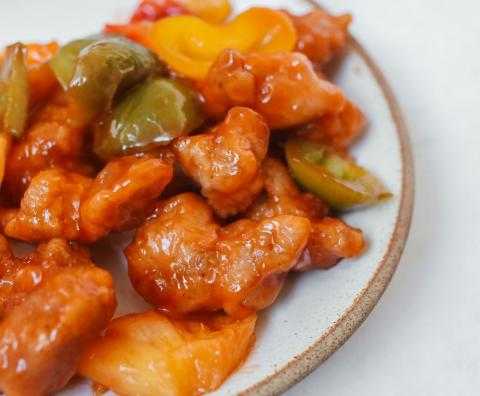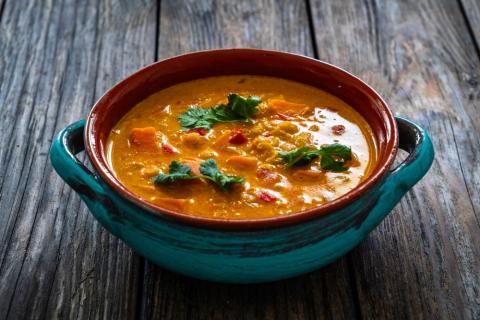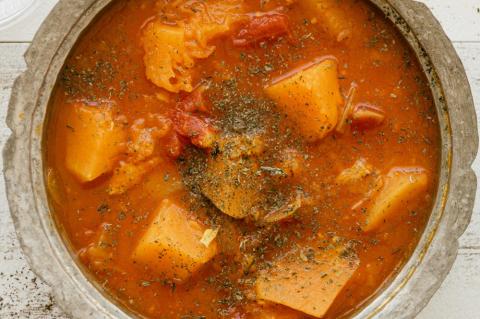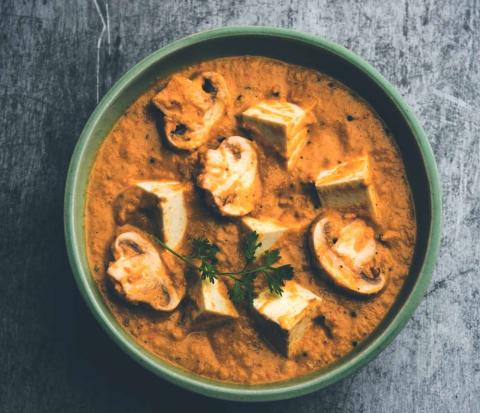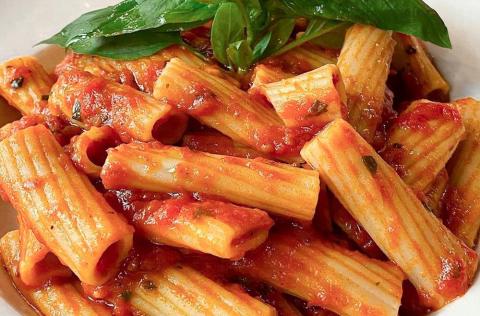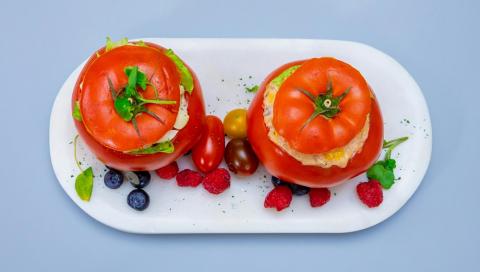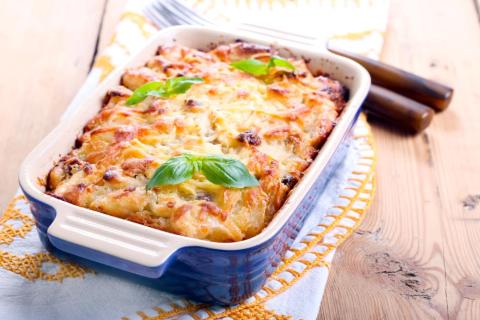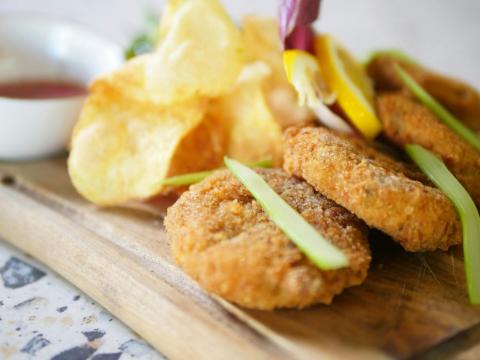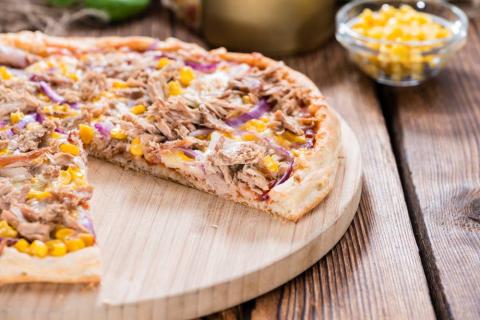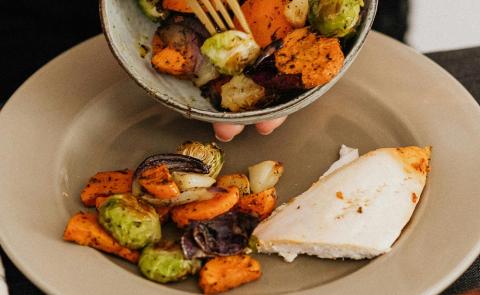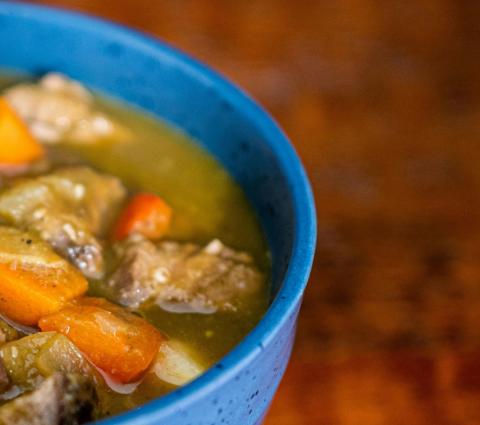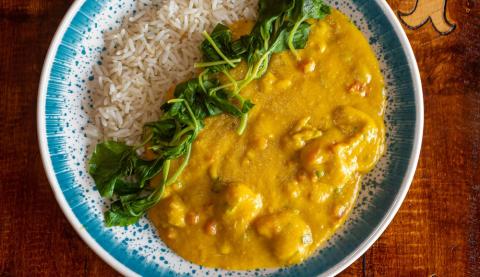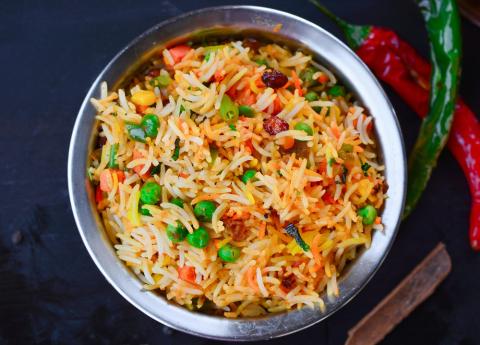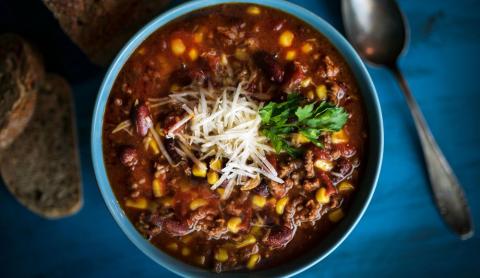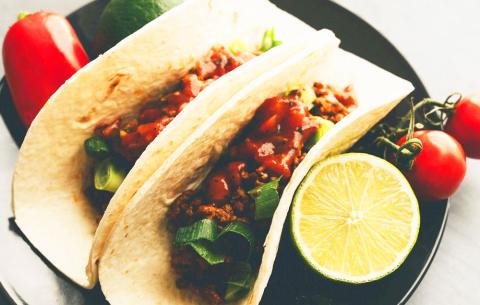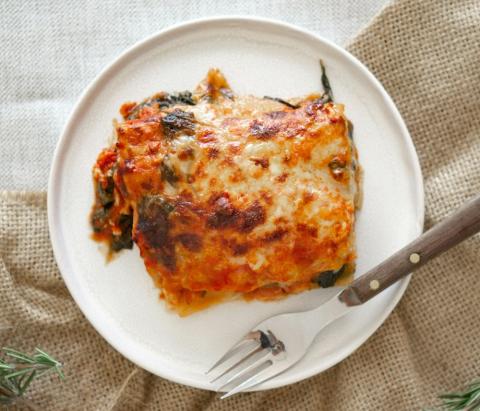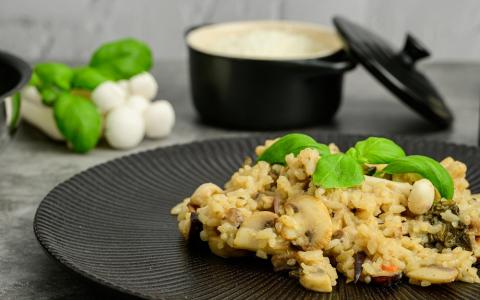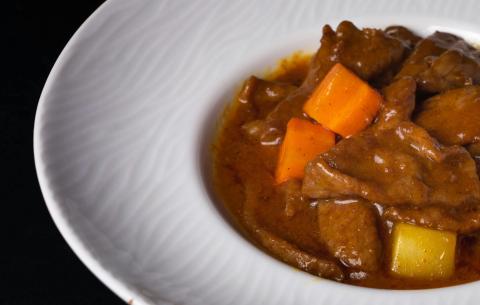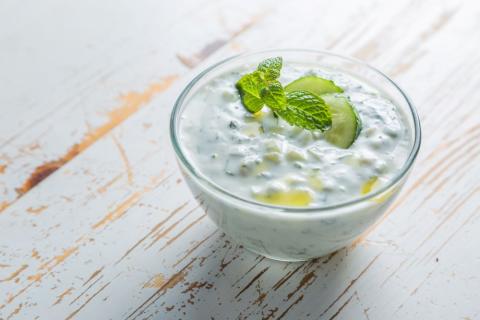- 4 Wooden Skewers
- 4 Large (380g) Pitta Breads
- 4 Medium (520g) Chicken Breasts
- 2 Medium (300g) Onions
- 1 (160g) Red Pepper
- 1 (160g) Green Pepper
- 1 Juiced (20g) Lemon
- 1 Tablespoon (10g) Vegetable Oil
- 2 (6g) Garlic Cloves
- 1 Teaspoon (1g) Mixed Herbs
- 2 Small Pots (180ml) Natural Yogurt
- ½ (180g) Cucumber
Ingredients
Allergy Disclaimer
Always check the label of each ingredient for allergy warnings.
Method
- Soak the wooden skewers in a bowl of water.
- To make the marinade, peel and finely chop the garlic and add to a bowl with lemon juice, oil and mixed herbs then mix well.
- Cut chicken into cubes and add to sauce. Leave in bottom shelf of the fridge for at least 30 minutes to marinade.
- Peel the onion and chop it into chunky slices. Chop the peppers into chunks.
- Preheat grill then alternate chicken, pepper and onion on skewers to make kebabs.
- Place kebabs under grill for 10-15 minutes turning every few minutes to cook evenly. Chicken will be cooked when it is white all the way through.
- Grate cucumber and mix in a bowl with yogurt and chopped mint leaves.
- Remove from skewers and serve with sauce and pitta bread.
Time Saver Tips
You could marinade the chicken earlier in the day or even the night before and keep it covered in the fridge. Not only is this handy when you come to make the rest later, it might even taste better! Why not make the cucumber yoghurt beforehand and pop it in the fridge? That’s one less thing to worry about later.
Cost Saver Tips
This works great with any meat or fish, so it’s good to keep your eyes peeled for any bargains – whether that’s diced lamb, pork, haddock or salmon. You could even use tofu as a vegetarian alternative if you’ve got any in. A really easy way to make this go further is to bulk it out with any vegetables you have in, like courgette, mushrooms, and onions. You could even try using less meat and pop some extra veg in it instead. No worries if you don’t have pitta bread in. You could always have this with rice (260g serves four people) – either white or brown. If you don’t have skewers, you could try grilling the vegetables and meat/fish on a baking tray instead.
Tips for Kids
Why not let your little one choose their favourite vegetables for their kebab and challenge them to see how colourful they can make it? You could even see if they can make a kebab rainbow! Don’t forget to give those hands a good wash after touching any raw meat or fish.
Nutritional Information
Based on a single serving of 430g (% of an adult's reference intake)
Energy
495 kcals ( 25 %)
2,077 kJ ( 25 %)
Fat
1.3 g ( 7 %)
Saturates
67.5 g ( %)
Sugar
14.2 g ( 16 %)
Salt
1.4 g ( 23 %)
Detailed nutritional information
| Per 100g | Per 430g serving | |
|---|---|---|
| Energy Kcals | 115 | 495 |
| Energy Kj | 483 | 2,077 |
| Protein | 10.6 g | 45.6 g |
| Total Fat | g | g |
| Saturated Fat | 0.3 g | 1.3 g |
| Carbohydrates | 15.7 g | 67.5 g |
| Total Sugars | 3.3 g | 14.2 g |
| NSP Fibre | 1.1 g | 4.7 g |
| Sodium | 130 mg | 559 mg |
| Salt | 0.3 g | 1.4 g |
Find out about nutritional labelling
Nutrition labels on the front of packaging
- Most of the big supermarkets and many food manufacturers display nutritional information on the front of pre-packed food.
- Front of pack nutrition labels provide information on the number of grams of fat, saturated fat, sugars and salt and the amount of energy (in kJ and kcal) in a serving or portion of a recipe.
- The labels also include information about reference intakes (expressed as a percentage) which are guidelines about the approximate amount of particular nutrients and energy required for a healthy diet.
- The colour coding tells you at a glance if the food has high (red), medium (amber) or low (green) amounts of fat, saturated fat, sugars and salt.
- The more greens on the label, the healthier the choice
- Amber means neither high nor low, so you can eat foods with all or mostly ambers on the label most of the time.
- Reds on the label means the food is high in that nutrient and these are the foods we should cut down on. Try to eat these foods less often and in small amounts.
Food shopping tips
If you’re trying to decide which product to choose, check to see if there's a nutrition label on the front of the pack. This will help you to quickly assess how your choices stack up. You will often find a mixture of red, amber and green colour coding for the nutrients. So when you're choosing between similar products, try to go for more greens and ambers and fewer reds if you want to make a healthier choice.
 Activities & Play
Activities & Play Behaviour
Behaviour Childcare
Childcare Development & Growing Up
Development & Growing Up Family, Friends & Relationships
Family, Friends & Relationships Feeding Your Baby
Feeding Your Baby Food & Eating
Food & Eating Health & Safety
Health & Safety Mental Health & Wellbeing
Mental Health & Wellbeing Money & Work
Money & Work Online Behaviour & Safety
Online Behaviour & Safety Pregnancy & First Days
Pregnancy & First Days School & Education
School & Education Sleep
Sleep


